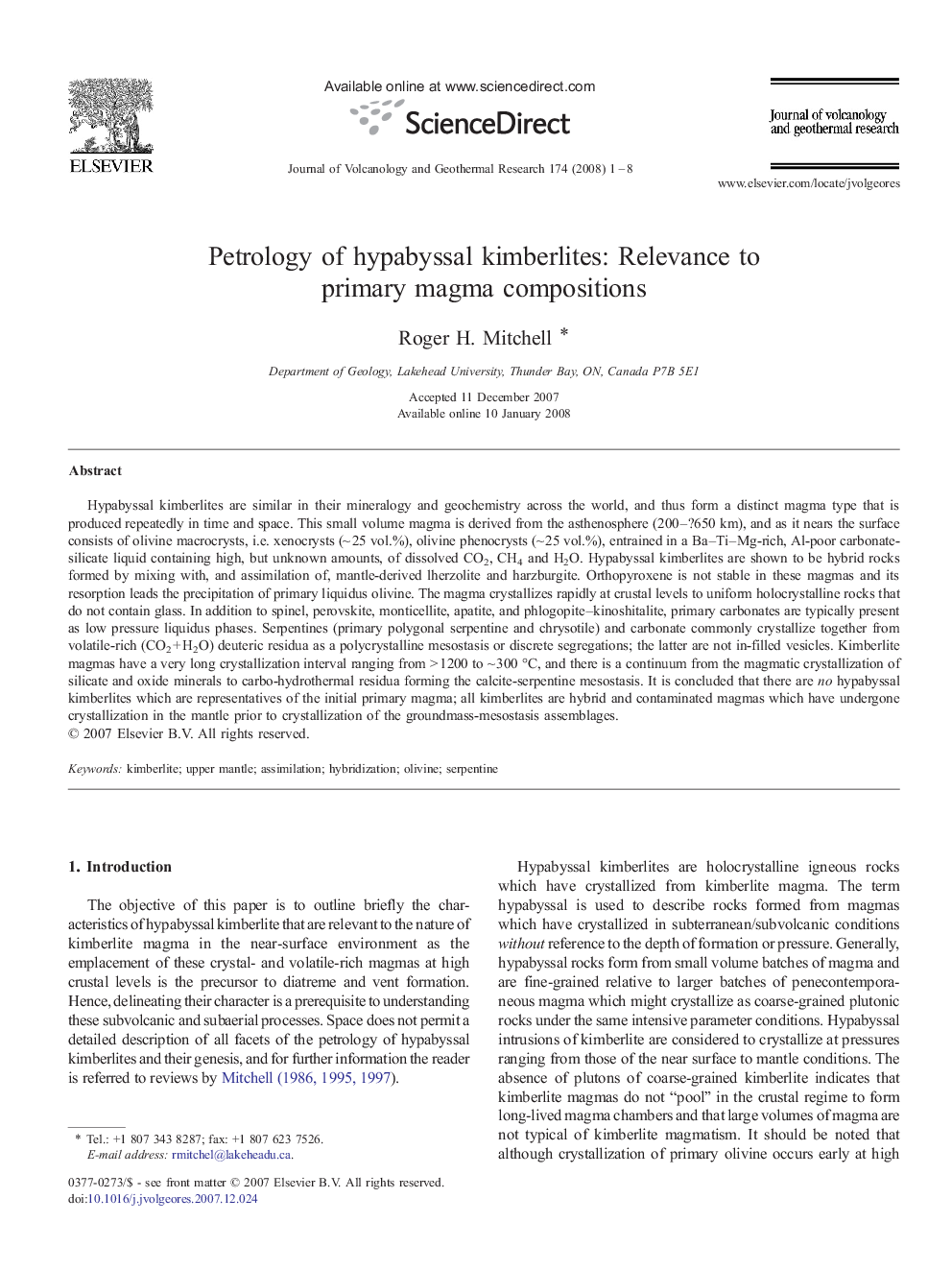| Article ID | Journal | Published Year | Pages | File Type |
|---|---|---|---|---|
| 4714757 | Journal of Volcanology and Geothermal Research | 2008 | 8 Pages |
Hypabyssal kimberlites are similar in their mineralogy and geochemistry across the world, and thus form a distinct magma type that is produced repeatedly in time and space. This small volume magma is derived from the asthenosphere (200–?650 km), and as it nears the surface consists of olivine macrocrysts, i.e. xenocrysts (~ 25 vol.%), olivine phenocrysts (~ 25 vol.%), entrained in a Ba–Ti–Mg-rich, Al-poor carbonate-silicate liquid containing high, but unknown amounts, of dissolved CO2, CH4 and H2O. Hypabyssal kimberlites are shown to be hybrid rocks formed by mixing with, and assimilation of, mantle-derived lherzolite and harzburgite. Orthopyroxene is not stable in these magmas and its resorption leads the precipitation of primary liquidus olivine. The magma crystallizes rapidly at crustal levels to uniform holocrystalline rocks that do not contain glass. In addition to spinel, perovskite, monticellite, apatite, and phlogopite–kinoshitalite, primary carbonates are typically present as low pressure liquidus phases. Serpentines (primary polygonal serpentine and chrysotile) and carbonate commonly crystallize together from volatile-rich (CO2 + H2O) deuteric residua as a polycrystalline mesostasis or discrete segregations; the latter are not in-filled vesicles. Kimberlite magmas have a very long crystallization interval ranging from > 1200 to ~ 300 °C, and there is a continuum from the magmatic crystallization of silicate and oxide minerals to carbo-hydrothermal residua forming the calcite-serpentine mesostasis. It is concluded that there are no hypabyssal kimberlites which are representatives of the initial primary magma; all kimberlites are hybrid and contaminated magmas which have undergone crystallization in the mantle prior to crystallization of the groundmass-mesostasis assemblages.
